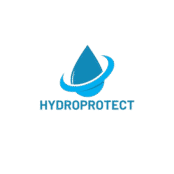Understanding Hotmelt Roof Waterproofing
Hotmelt roof waterproofing has revolutionized the way we approach roof durability and protection. Particularly for hall and warehouse owners, developers, and property managers, this innovative technology offers a robust and reliable insulation solution that outperforms many traditional methods. In this post, we will delve into the specifics of hotmelt technology, highlighting its benefits and explaining why it stands out as the preferred choice for long-term roof waterproofing.
What is Hotmelt Waterproofing?
Hotmelt waterproofing refers to a seamless, liquid-applied system that ensures a flexible, durable, and long-lasting waterproof barrier. Unlike conventional layered methods, hotmelt bonds strongly to the substrate, forming a monolithic membrane that eliminates the risk of water ingress.
Key Components of Hotmelt Systems
Hotmelt systems typically comprise the following components:
– **Bitumen-Based Composition**: This allows for high elasticity and adaptability to structural movements.
– **Reinforcement Layers**: These are typically polyester or fiberglass, adding extra strength and stability.
– **Protective Surfaces**: A choice of finishes, such as aggregate or green roof options, allowing customization for the specific needs of the building.
Installation Process
The installation of hotmelt systems involves heating the membrane to a liquid state, then applying it to the roof substrate. This process ensures perfect adhesion and uniform coverage, filling any small gaps or imperfections in the surface.
Advantages of Hotmelt Roof Waterproofing
Hotmelt roof waterproofing offers numerous advantages which make it an attractive option for property managers and developers aiming for durability and efficiency.
Superior Durability and Lifespan
– Hotmelt systems are known for their exceptional durability, often surpassing 30 years of effective protection with proper maintenance.
– Resistance to extreme weather conditions, including freeze-thaw cycles and UV exposure, ensures the long-term stability of the waterproofing layer.
Cost-Effectiveness
– While the initial cost may be higher than some alternatives, the longevity and minimal maintenance needs provide excellent long-term economic benefits.
– Reduced need for repairs or replacements translates to lower life-cycle costs and higher return on investment.
Environmental Benefits
– Cold-applied complementary systems help minimize the use of solvents, making hotmelt an environmentally-friendly choice.
– Offers opportunities for sustainable building practices, such as green roof installations, which can further enhance ecological benefits.
Hotmelt vs. Traditional Waterproofing Methods
When evaluating different waterproofing solutions, hotmelt stands out by overcoming several limitations commonly associated with traditional systems.
Seamless Application
Traditional sheet-based waterproofing often involves seams that can be vulnerable to leaks. Hotmelt applications create a seamless membrane, which greatly reduces potential points of failure.
Adaptability to Complex Roof Designs
Unlike rigid sheet materials, hotmelt can adapt to any roof shape and accommodate intricate architectural features, offering unrivaled flexibility in design and execution.
Maintenance and Repairs
– Traditional systems might require more frequent inspections and repairs due to seams and joint issues.
– The robust and flexible nature of hotmelt minimizes the chances of damage, thereby reducing maintenance efforts and costs over time.
Optimizing Hotmelt Waterproofing for Maximum Benefit
To fully leverage the advantages of hotmelt systems, it is crucial to ensure optimal installation and regular maintenance practices.
Choosing Professional Installation
– Engage certified and experienced contractors who specialize in hotmelt systems to ensure precision and quality in application.
– Quality installation helps achieve the highest levels of waterproofing performance, essential for long-lasting results.
Regular Inspection and Maintenance
– While hotmelt requires minimal maintenance, regular inspections help in early detection of potential issues.
– Prompt attention to any minor repairs can prevent larger problems and extend the life of the waterproofing system.
Summary
In conclusion, hotmelt roof waterproofing is a revolutionary approach that offers unprecedented durability, flexibility, and cost-effectiveness. By providing a seamless, adaptable membrane, it effectively overcomes many shortcomings of traditional waterproofing solutions. For hall and warehouse owners, developers, and property managers, hotmelt offers a long-term solution that ensures peace of mind and significant economic benefits. By opting for professional installation and committing to regular maintenance, building stakeholders can optimize the performance and lifespan of their hotmelt systems.

